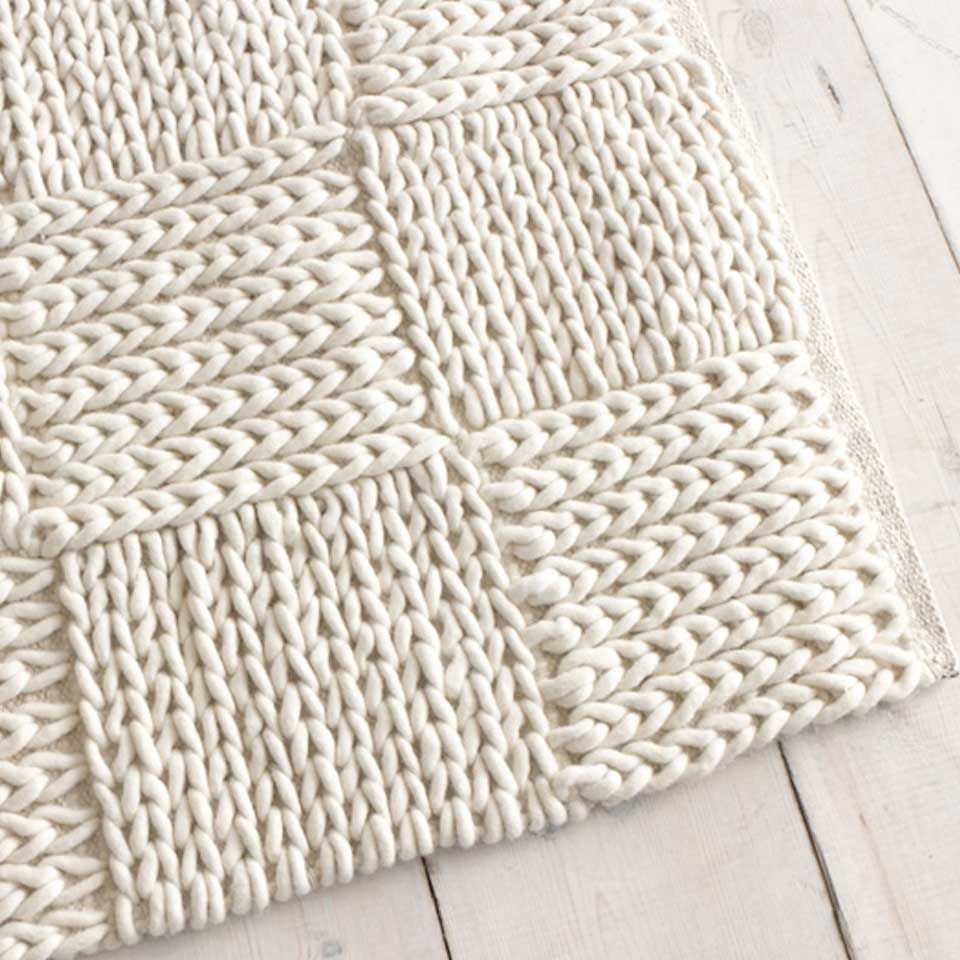
Hand knitted rugs patterns have become increasingly popular in recent years. With their unique textures, beautiful colors, and intricate designs, hand knitted rugs bring warmth and coziness to any home. Whether you are a beginner or an experienced knitter, there is a wide range of patterns available that can help you create your own hand knitted rug masterpiece. These patterns offer endless possibilities for creativity and personalization, allowing you to choose the perfect design to suit your style and decor.
One of the great things about hand knitted rugs is that they can be made using a variety of different techniques and materials. You can use chunky yarns and large needles to create a thick and luxurious rug, or opt for finer yarns and smaller needles for a more delicate and intricate design. The choice of colors is also endless, so you can easily create a rug that matches your existing furniture and decor.
Another advantage of hand knitted rugs is that they are not only beautiful but also functional. Knitted rugs are great for adding an extra layer of warmth to your floors, especially during the colder months. They provide a soft and cozy surface to walk on, making them perfect for bedrooms, living rooms, and playrooms. Additionally, they are easy to maintain and can be cleaned with a simple wash in the machine or by hand.
Choosing the Right Yarn for Your Rug
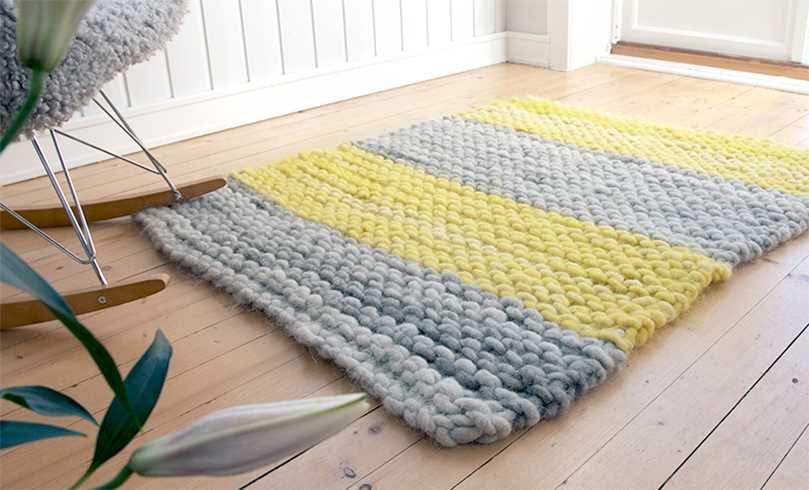
When it comes to knitting a rug, one of the most important decisions you’ll need to make is choosing the right yarn. The yarn you select will determine the texture, durability, and overall appearance of your finished rug. There are several factors to consider when making this decision.
Fiber Content
The first thing to consider is the fiber content of the yarn. Different fibers have different properties that can affect the feel and performance of your rug. For example, if you want a luxurious, soft rug, you might choose a yarn made from natural fibers like merino wool or cashmere. On the other hand, if you need a rug that can withstand high traffic areas, you may opt for a more durable synthetic fiber like nylon or acrylic.
Weight
Another important factor to consider is the weight of the yarn. The weight refers to the thickness of the individual strands of yarn. Bulky yarns are thicker and heavier, making them ideal for cozy, warm rugs. Lighter weight yarns, such as fingering or sport weight, are better suited for more delicate rugs or projects that require finer detail. Consider the intended use of your rug and choose a yarn weight that matches your needs.
Color and Texture
Finally, don’t forget to consider the color and texture of the yarn. The color of your yarn can greatly impact the overall aesthetic of your rug. Consider the color scheme of the room where the rug will be placed and choose a yarn that complements or enhances the existing decor. Additionally, the texture of the yarn can add visual interest and dimension to your rug. Experiment with different textures, such as boucle or chenille, to create a unique and eye-catching design.
By carefully considering the fiber content, weight, color, and texture of your yarn, you can ensure that you choose the right yarn for your rug project. Take the time to swatch and test different yarns to see how they knit up and to determine which one feels and looks best for your specific rug design. Choosing the right yarn will not only result in a beautiful finished rug, but also a rug that is durable and fits your needs.
Essential Knitting Tools for Rug Making
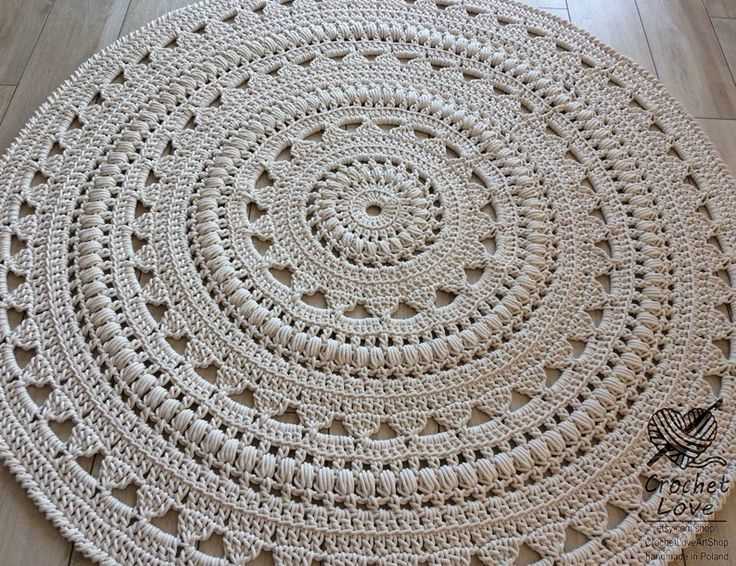
When it comes to making hand knitted rugs, having the right tools is essential for a successful project. These tools not only make the process easier and more efficient, but they also help in achieving a high-quality end result. Here are some of the essential knitting tools that every rug maker should have:
1. Knitting Needles:
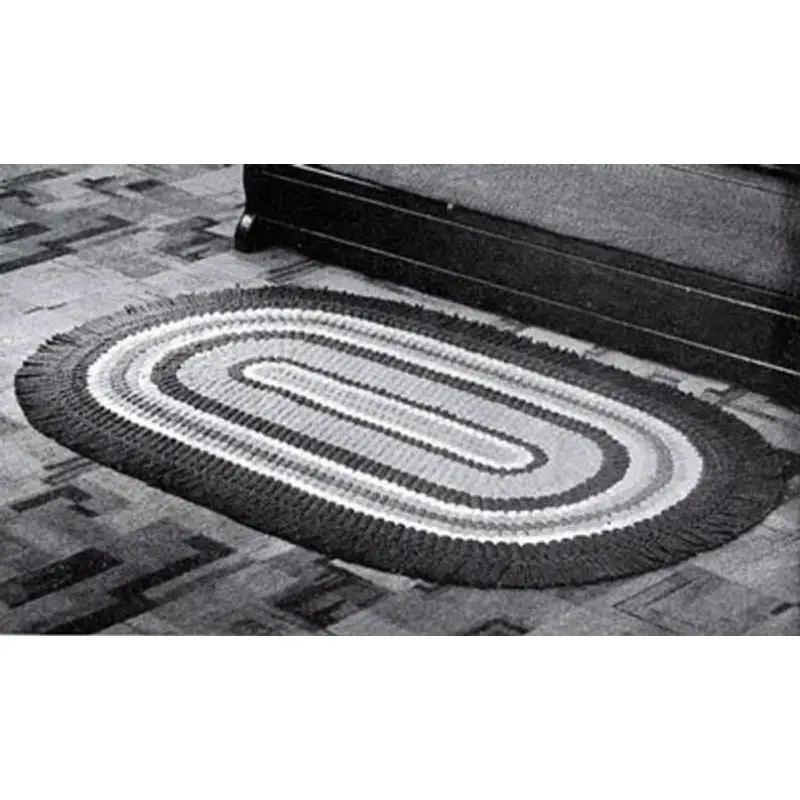
Knitting needles are the backbone of any knitting project, including rug making. However, for rug making, it is recommended to use thicker and sturdier needles, such as size 13 or 15 needles. These larger needles allow for a looser and more substantial fabric, making the rug more durable and comfortable to walk on.
2. Stitch Markers:
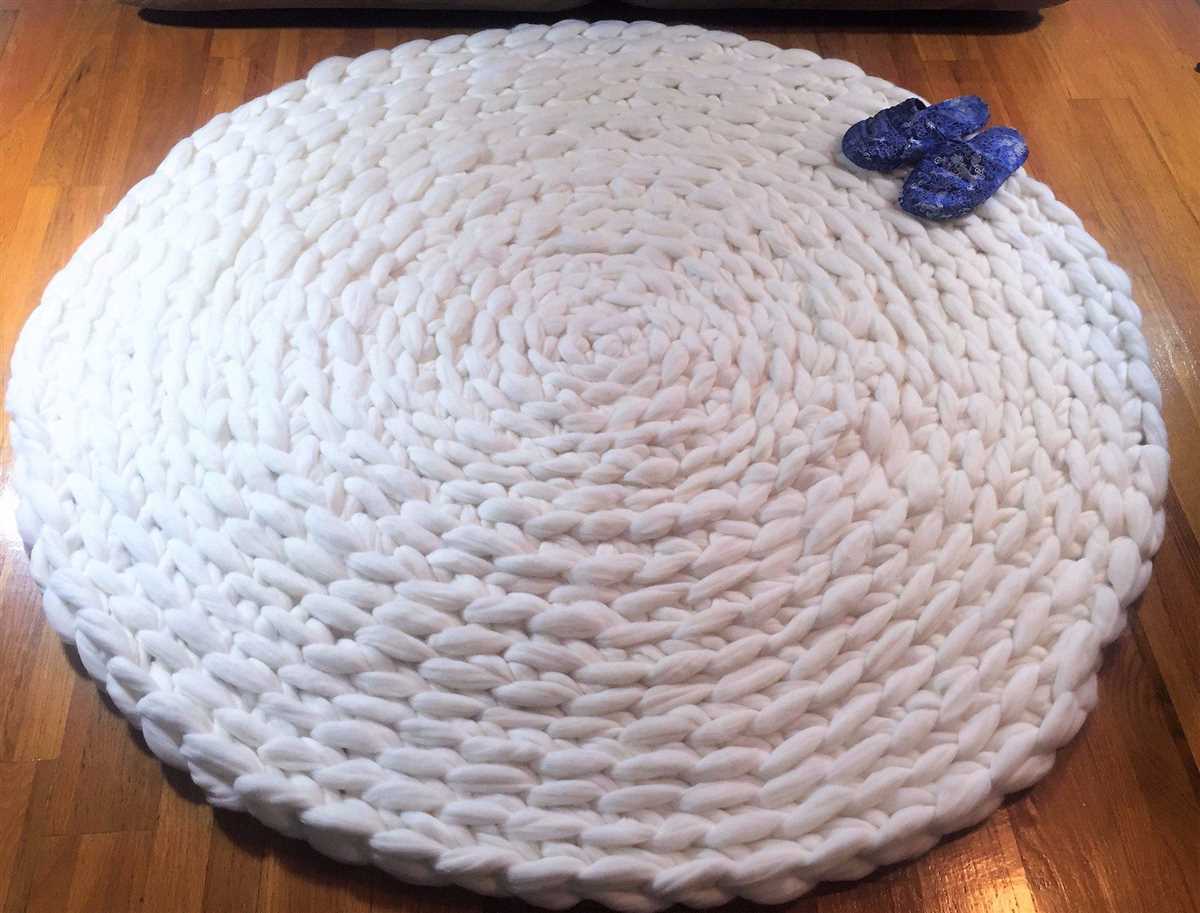
Stitch markers are small plastic or metal rings that are used to mark specific stitches or sections in a knitting pattern. They help in keeping track of the pattern and ensure that the right stitches are made at the right place. In rug making, stitch markers can be especially useful when working on intricate designs or patterns.
3. Row Counter:
A row counter is a small device or tool that is used to keep track of the number of rows in a knitting project. It helps in ensuring that the desired dimensions of the rug are achieved and also aids in keeping track of pattern repetitions. With a row counter, rug makers can easily keep track of their progress and make adjustments as needed.
4. Yarn Bobbins:
Yarn bobbins are small, cylindrical tools that are used to hold different colors of yarn for colorwork knitting. In rug making, where color changes are common, yarn bobbins come in handy for keeping the different yarns organized and preventing tangling. They allow for smooth and seamless color transitions, adding beauty to the rug design.
5. Tapestry Needles:
Tapestry needles are large-eyed needles with a blunt tip that are used for weaving in ends and seaming pieces together. In rug making, tapestry needles are essential for finishing the project by neatly weaving in any loose ends. They are also useful for sewing pieces together to create larger rugs or for attaching additional embellishments.
With these essential knitting tools in hand, rug makers can confidently embark on their projects and create beautiful, hand knitted rugs that are not only functional but also visually appealing.
Basic Knitting Techniques for Hand Knitted Rugs
Knitting rugs by hand is a creative and rewarding project that allows you to create unique and personalized pieces for your home. To get started, it’s important to learn some basic knitting techniques that will help you create beautiful and durable rugs.
Casting on: The first step in any knitting project is to cast on the stitches. For hand knitted rugs, it’s best to use a long-tail cast on method, as it creates a strong and flexible edge. This method involves using both hands to create the initial row of stitches, ensuring an even tension throughout the rug.
Knit and purl stitches: The knit stitch and the purl stitch are the two basic stitches in knitting. The knit stitch creates a smooth and flat surface, while the purl stitch creates a textured pattern. By combining these two stitches in different patterns, you can create a wide variety of designs for your rugs.
Increasing and decreasing: To shape your hand knitted rug, you will need to know how to increase and decrease stitches. Increasing stitches adds width to your rug, while decreasing stitches removes width. There are several methods for increasing and decreasing, such as yarn overs and knit-two-together, which can be used to create interesting and decorative patterns in your rugs.
Binding off: Once you have finished knitting your rug, it’s important to bind off the stitches to create a neat and finished edge. The most common method for binding off is the basic bind off, which involves knitting two stitches together and passing the first stitch over the second stitch. This creates a secure edge that won’t unravel over time.
Finishing: After binding off, it’s time to finish your hand knitted rug. This may involve trimming any loose ends or weaving them into the fabric to create a clean and polished look. You may also choose to block your rug, which involves dampening it and laying it flat to dry in order to shape and flatten the stitches. Once your rug is finished, you can enjoy the satisfaction of having created a beautiful and functional piece for your home.
Beginner-Friendly Rug Patterns to Start With
If you’re new to knitting rugs and looking to try out some beginner-friendly patterns, we’ve got you covered. Knitting rugs can be a fun and rewarding project, and these patterns are perfect for those who are just starting out.
1. Garter Stitch Rug
The garter stitch rug is a classic pattern that every beginner should try. This pattern uses only the basic knit stitch, making it easy to follow along. You can choose any color of yarn you like to create a simple, yet beautiful rug for your home.
2. Basketweave Rug
The basketweave pattern is another great choice for beginners. It creates an interesting texture that adds depth and warmth to your rug. This pattern involves alternating knit and purl stitches in a specific pattern, but once you get the hang of it, it becomes quite easy to follow.
3. Seed Stitch Rug
The seed stitch pattern is perfect for beginners who want to practice their knitting skills. It creates a bumpy texture that adds visual interest to your rug. This pattern involves alternating knit and purl stitches, so it’s a great way to practice different techniques.
These are just a few of the beginner-friendly rug patterns that you can try out. Don’t be afraid to experiment with different stitches and patterns to create your own unique rugs. With a little bit of practice, you’ll be able to create beautiful hand-knitted rugs for your home.
Intermediate Hand Knitted Rug Patterns: Taking Your Skills to the Next Level
Once you have mastered the basics of hand knitting rugs, it’s time to challenge yourself and take your skills to the next level. Intermediate hand knitted rug patterns offer an opportunity to expand your knitting techniques and create more complex and intricate designs. These patterns often incorporate different stitches, colorwork, and shaping techniques, allowing you to showcase your creativity and knitting prowess.
1. Cable Knit Rug: Cable knitting is a popular intermediate technique that adds texture and depth to your rugs. By crossing stitches over each other, you can create beautiful braided cable patterns that will enhance the visual appeal of your rug. Experiment with different cable stitch combinations to create unique designs that reflect your personal style.
2. Fair Isle Rug: Fair Isle knitting is a traditional technique that involves working with multiple colors to create intricate patterns. Intermediate knitters can explore this technique by incorporating Fair Isle motifs into their rug designs. Choose a color palette that complements your home decor and experiment with different motifs and color combinations to create a visually stunning rug.
3. Lace Knit Rug: Lace knitting is a delicate and intricate technique that can transform your hand knitted rugs into elegant and sophisticated pieces. Intermediate knitters can challenge themselves by incorporating lace patterns into their rug designs. From simple lace motifs to more complex lace stitch combinations, there are endless possibilities to create stunning lace knit rugs.
4. Shaped Rug: Intermediate knitters can take their skills to the next level by adding shaping techniques to their rug patterns. By increasing and decreasing stitches, you can create rugs with interesting shapes and contours. Experiment with different shaping techniques such as short rows or gradual increases and decreases to create unique and eye-catching rugs.
5. Textured Rug: Intermediate knitters can explore different textured stitches to add depth and interest to their rug designs. From bobbles and popcorn stitches to seed stitch and honeycomb patterns, there are numerous textured stitch options to choose from. Incorporating textured stitches into your rug patterns will not only enhance their visual appeal but also provide a cozy and luxurious feel underfoot.
Intermediate hand knitted rug patterns offer an exciting challenge for knitters who want to expand their skills and create more sophisticated and intricate designs. Whether you choose to explore cable knitting, Fair Isle, lace, shaping, or textured stitches, these patterns will push your knitting abilities to new heights and result in beautiful and unique hand knitted rugs.
Advanced Knitting Stitches to Enhance Your Rugs
When it comes to hand-knitted rugs, using advanced knitting stitches can add a beautiful and unique texture to your finished piece. These stitches can elevate your rug design to another level, making it not only cozy but also visually appealing. Whether you are an experienced knitter or looking to challenge yourself with new techniques, here are some advanced knitting stitches that you can incorporate into your rug patterns:
1. Cable Stitch:
The cable stitch is one of the most popular advanced knitting stitches used in rug designs. It creates a twisted pattern that adds depth and dimension to the fabric. By crossing stitches over each other, you can create intricate cable designs that resemble braids or ropes. This stitch is perfect for creating a textured and luxurious rug.
2. Lace Stitch:
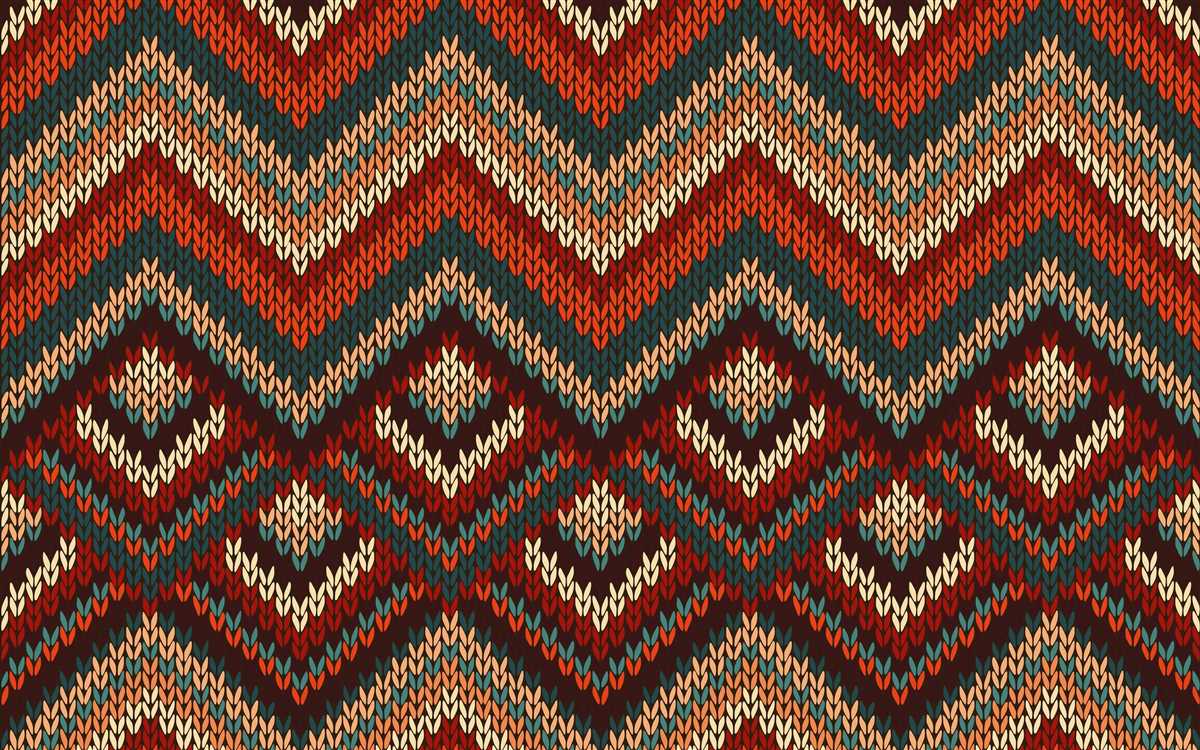
If you want to add an elegant and delicate touch to your hand-knitted rug, the lace stitch is an excellent choice. This stitch creates an openwork pattern with holes and intricate designs. You can incorporate floral or geometric patterns into your rug through lace stitches, giving it an airy and intricate look. Lace stitches are perfect for lighter rugs and can add a touch of sophistication to any room.
3. Bobble Stitch:
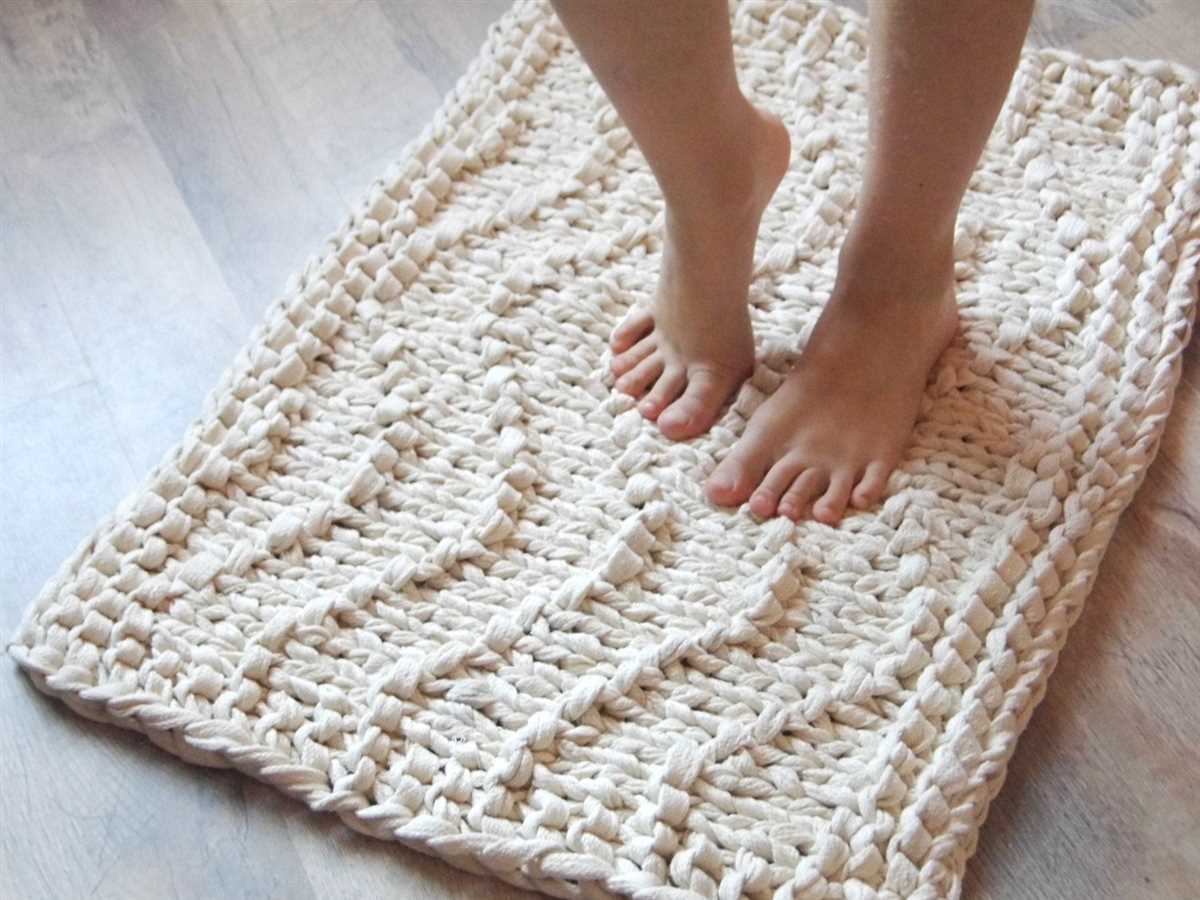
The bobble stitch, also known as the popcorn stitch, is a fun and playful stitch that adds texture and dimension to your rug. This stitch creates small, raised bobbles or clusters of stitches that resemble little bubbles. By strategically placing these bobbles in your rug design, you can create interesting patterns and motifs. The bobble stitch is perfect for adding a whimsical touch to children’s playrooms or nurseries.
These are just a few examples of advanced knitting stitches that can enhance your hand-knitted rugs. By incorporating these stitches into your rug patterns, you can create unique and visually stunning pieces that will be the centerpiece of any room.
Tips for Designing Your Own Unique Rug Patterns
Designing your own unique rug patterns can be a fun and creative process. Whether you are an experienced knitter or just starting out, these tips will help you create beautiful and one-of-a-kind rugs that will enhance any space.
1. Choose your colors wisely: When designing a rug pattern, it’s important to consider the colors you will be using. Think about the overall vibe you want to create and select colors that complement each other well. You can create a harmonious look with shades of the same color or go for a bold and vibrant design by choosing contrasting colors.
2. Experiment with textures: Don’t be afraid to play around with different yarn textures to add interest and depth to your rug pattern. Mix bulky and fine yarns, or incorporate different stitch patterns to create texture variations. This will give your rug a unique and tactile quality.
3. Consider the space: Before designing your rug pattern, think about where it will be placed and the size of the space. A smaller room may benefit from a simple and compact design, while a larger room can handle a more intricate and elaborate pattern. Take measurements and consider how the rug will fit into the overall decor scheme.
4. Look for inspiration: Take your time to gather inspiration for your rug pattern. Browse through magazines, interior design blogs, and even nature for ideas. Look for patterns and motifs that catch your eye and adapt them to suit your own style and preferences.
5. Start with a sketch: Before you start knitting, sketch out your rug pattern on paper. This will help you visualize the design and make any necessary adjustments before you begin. It’s also a great way to keep track of your progress as you knit.
6. Don’t be afraid to make mistakes: Remember, designing your own rug patterns is all about experimentation and creativity. Don’t be afraid to make mistakes or try something new. Some of the most beautiful designs come from unexpected twists and turns along the way.
7. Take your time: Designing and knitting a rug pattern is a labor of love. Take your time and enjoy the process. It’s important to be patient and not rush through it. This will ensure that you create a rug that you truly love and that will withstand the test of time.
By following these tips, you can design your own unique rug patterns that will add warmth and style to any space. So grab your knitting needles, unleash your creativity, and start designing your one-of-a-kind rug today!
Using Color and Texture to Create Stunning Effects
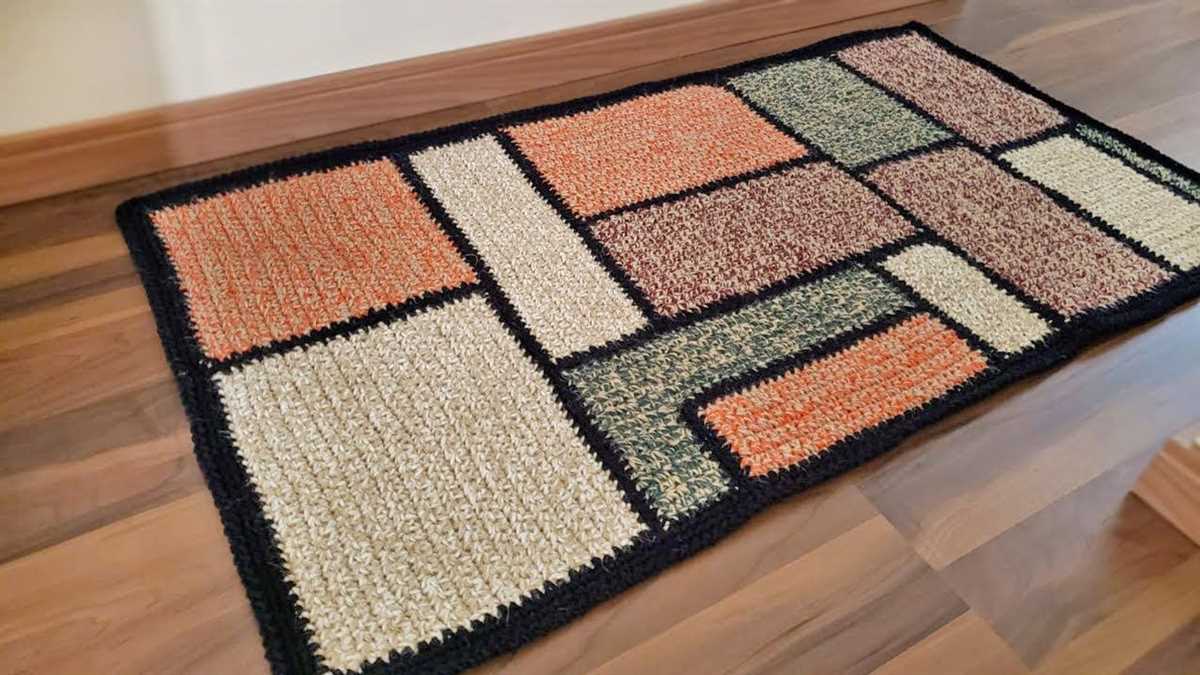
When it comes to hand-knitted rugs, the thoughtful use of color and texture can truly elevate a design and create stunning effects. By carefully selecting and combining different colors, you can bring a sense of depth and vibrancy to your rug. Whether you opt for bold, contrasting hues or a more subtle, monochromatic palette, the color choices you make can greatly impact the overall look and feel of your knitted rug.
Texture is another important aspect to consider in your design. By incorporating different yarns or stitches, you can add visual interest and dimension to your rug. Experimenting with various textures, such as chunky cable knits or delicate lace patterns, can create unique and eye-catching effects. Consider incorporating different textures within your design to create a rug that not only looks beautiful, but also feels tactile and luxurious underfoot.
One way to incorporate color and texture into your hand-knitted rug is by using a combination of solid and variegated yarns. Variegated yarns, which feature multiple colors within a single strand, can add pops of contrasting color and create intricate patterns when used alongside solid-colored yarns. This technique allows for endless creative possibilities and can result in a striking and visually dynamic rug.
Another option is to play with color gradients or ombre effects in your design. By transitioning from one color to another, you can create a visual gradient that adds depth and movement to your rug. This technique works especially well in rugs with repetitive stitch patterns, such as stripes or chevrons.
Overall, the use of color and texture is key to creating stunning effects in hand-knitted rugs. Whether you choose to experiment with bold color combinations, intricate stitch patterns, or textured yarns, the possibilities are endless. By carefully considering these elements in your design, you can create a one-of-a-kind rug that is not only visually striking, but also adds warmth and personality to any space.
Creating Professional-Quality Hand Knitted Rugs: Expert Techniques
Hand knitted rugs add warmth, texture, and beauty to any room. Whether you’re a novice knitter or an experienced one, mastering expert techniques can elevate your rug-making skills to a professional level. With attention to detail and precision, you can create stunning rugs that will impress guests and become cherished pieces in your home. Here are some expert techniques to help you create professional-quality hand knitted rugs.
1. Choose the Right Yarn
One of the key factors in creating professional-quality hand knitted rugs is selecting the right yarn. Consider the durability and texture of the yarn to ensure your rug will withstand foot traffic and provide the desired look and feel. Opt for yarns specifically designed for rugs, such as bulky or super bulky weight yarns, as they are thicker and more durable.
2. Practice Gauge Swatching
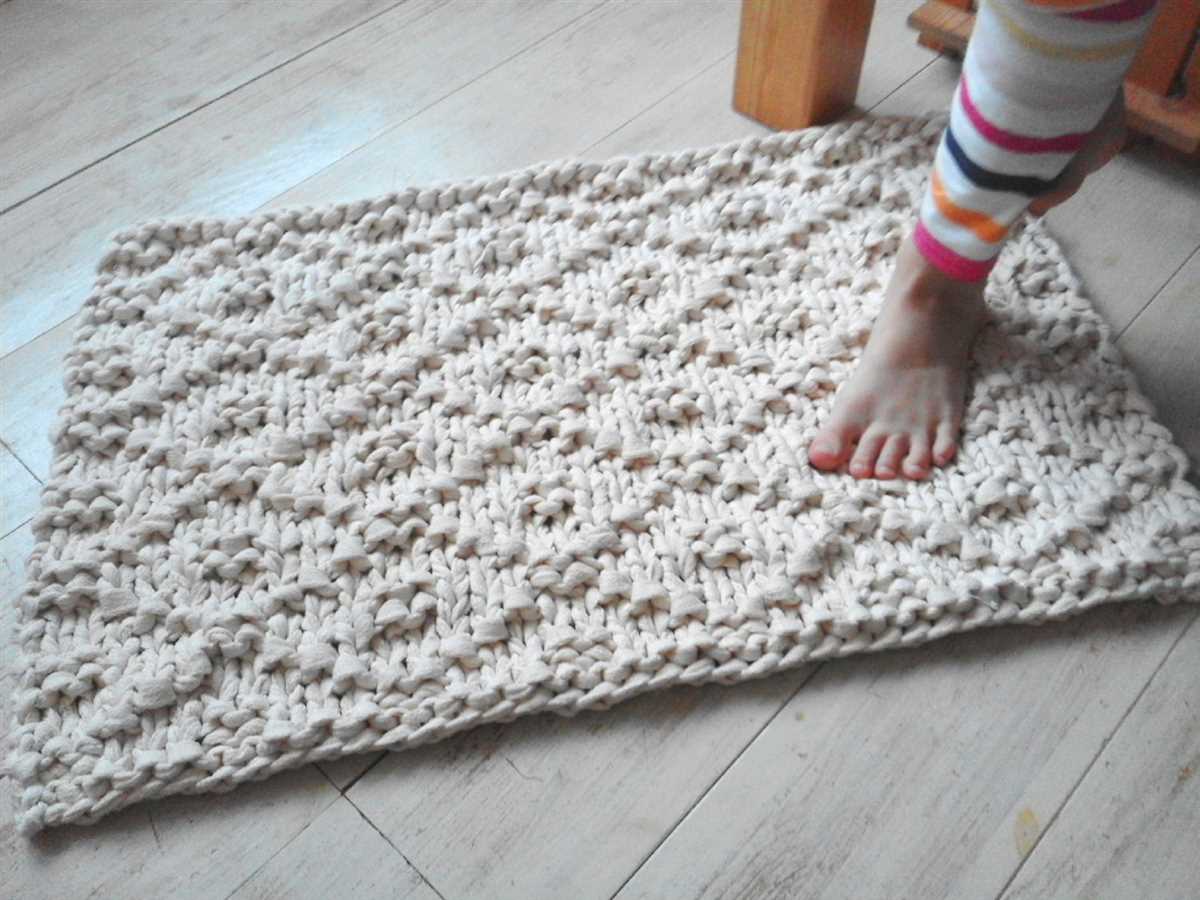
Gauge swatching is crucial for achieving the correct dimensions and stitch pattern in your hand knitted rug. Take the time to create a swatch using the chosen yarn and needles, and measure it to ensure it matches the pattern’s gauge. Adjust your needle size if necessary to achieve the desired gauge and avoid ending up with a rug that is too small or too large.
3. Incorporate Stitch Patterns
Experimenting with different stitch patterns can add interest and uniqueness to your hand knitted rug. From simple knits and purls to complex cable or lace patterns, there are numerous options to choose from. Consider the overall look you want to achieve and select a stitch pattern that complements your chosen yarn and room decor.
4. Use a Sturdy Base
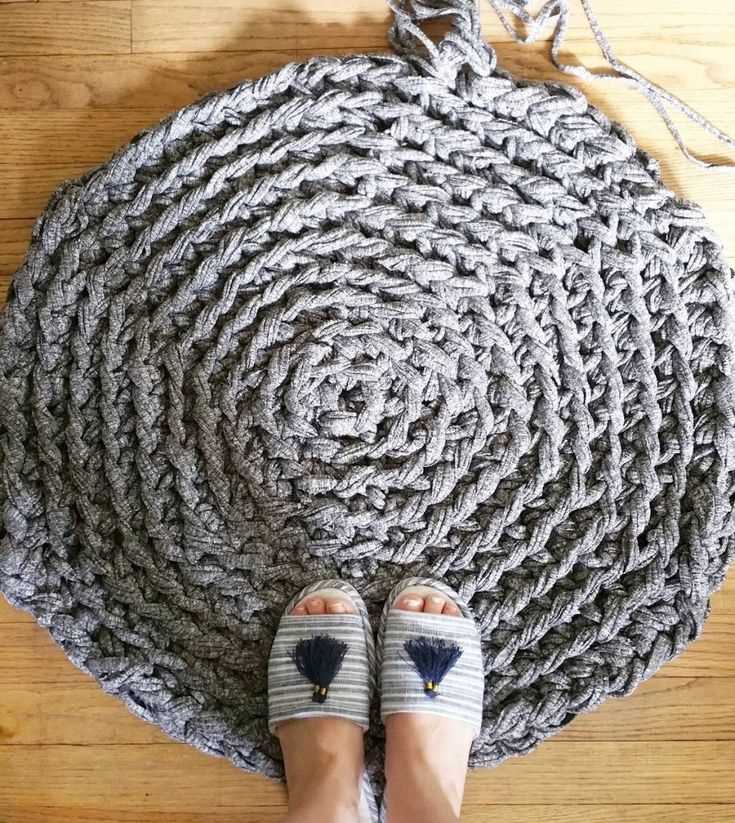
A sturdy base is essential for a professional-quality hand knitted rug. Consider using a non-slip rug pad as a foundation to prevent the rug from sliding or moving on the floor. Alternatively, you can create a sturdy backing by attaching a fabric liner to the back of your hand knitted rug using a whip stitch or blanket stitch.
5. Finishing Touches
The finishing touches can make a significant difference in the overall appearance of your hand knitted rug. Take the time to neatly weave in any loose ends and block the rug to shape it and ensure the stitches lie flat. Additionally, consider adding fringes or edging to enhance the rug’s aesthetic appeal.
By incorporating these expert techniques into your hand knitted rug-making process, you can achieve professional-quality results that are sure to impress. Remember to practice patience and attention to detail, and enjoy the rewarding process of creating a beautiful hand knitted rug.
Advanced Finishing Techniques for a Polished Look
When it comes to hand-knitted rugs, the finishing touches can make all the difference in achieving a polished look. Here are some advanced techniques that can help elevate your rug from homemade to professional quality.
1. Blocking
Blocking is a technique used to shape and stretch a knitted piece to its desired dimensions. For rugs, this is particularly important as it helps to even out the stitches and create a smooth and flat surface. To block a hand-knitted rug, wet it with water and lay it flat on a blocking mat or surface. Gently stretch the rug to the desired size and shape, and pin it in place. Allow it to dry completely before removing the pins.
2. Tassels or Fringe
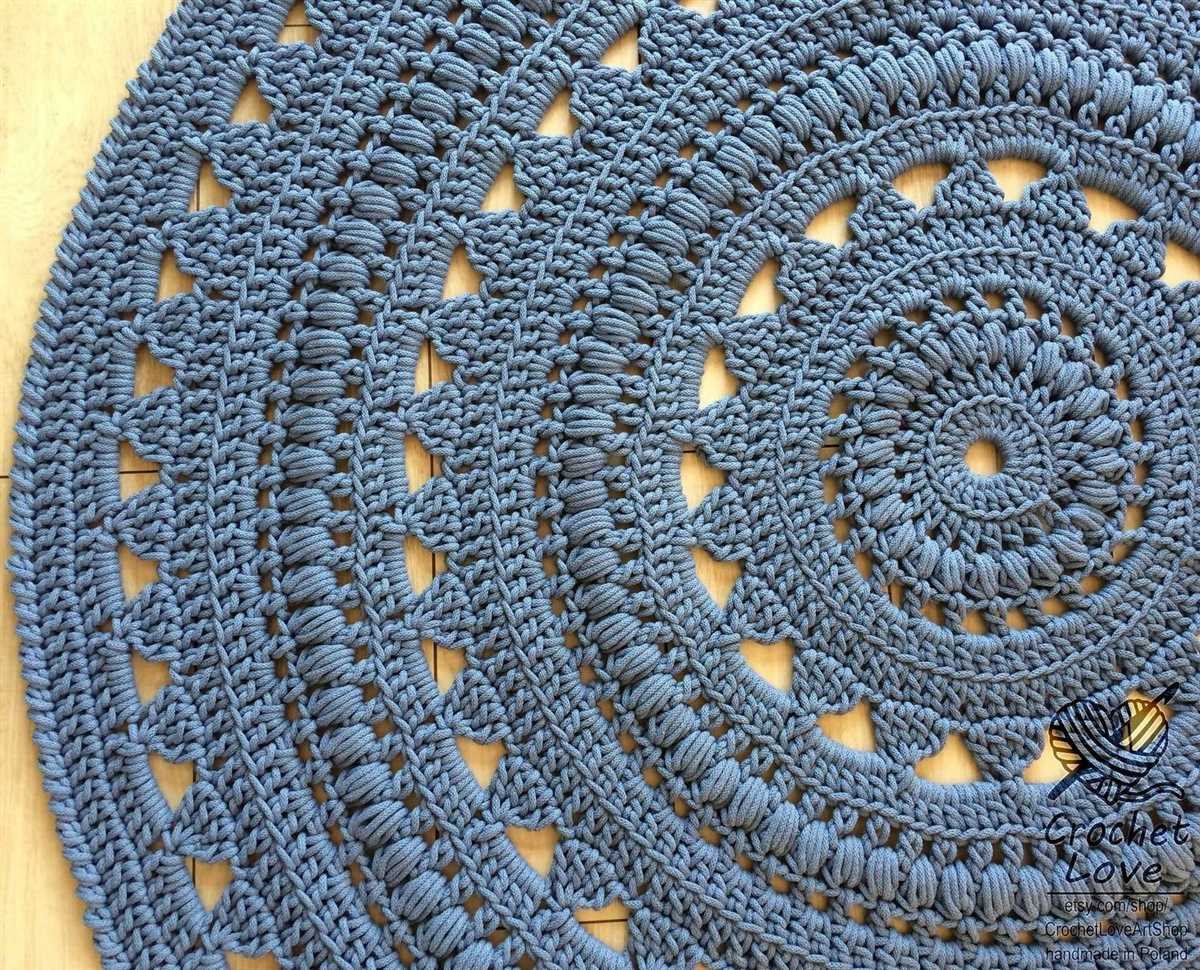
Adding tassels or fringe to the ends of your hand-knitted rug can give it an extra touch of elegance. To create tassels, cut strands of yarn, fold them in half, and attach them to the corners or edges of the rug. To add fringe, cut multiple strands of yarn and attach them evenly across the edge of the rug. Be sure to secure the tassels or fringe tightly to prevent unraveling.
3. Border or Edging
A border or edging can provide a clean and finished look to your hand-knitted rug. You can choose to knit a separate border and sew it onto the rug, or you can use a crochet hook to create a simple border directly onto the rug. This can be done by working single crochet stitches along the edges of the rug, or by adding a decorative crochet pattern for a more intricate border.
4. Linings or Backings
Adding a lining or backing to your hand-knitted rug can help improve its durability and prevent slipping. You can use a fabric lining or a non-slip backing material specifically designed for rugs. Secure the lining or backing to the rug using sewing or adhesive methods, making sure it is evenly attached throughout the entire surface of the rug.
By incorporating these advanced finishing techniques into your hand-knitted rug project, you can achieve a polished and professional look that will enhance the overall aesthetic appeal of your creation.
Incorporating Different Knitting Techniques in One Rug
Hand knitted rugs offer endless possibilities when it comes to creating unique and beautiful designs. One way to enhance the visual appeal of a rug is by incorporating different knitting techniques in its pattern. By combining various stitches and textures, you can create a rug that not only looks stunning but also feels great underfoot.
There are several knitting techniques that you can experiment with to add interest to your rug. Some popular techniques include:
- Fair Isle: This technique involves using multiple colors in the same row to create intricate patterns and motifs. By incorporating Fair Isle knitting into your rug, you can create eye-catching designs that are sure to be a focal point in any room.
- Cable: Cable knitting involves crossing stitches over each other to create braided or twisted designs. By incorporating cables in your rug pattern, you can add a touch of elegance and complexity to the overall design.
- Lace: Lace knitting involves creating delicate and intricate patterns using yarn-over and decrease stitches. By incorporating lace motifs in your rug, you can create a lighter and more airy feel, perfect for adding a touch of femininity to any space.
When incorporating different knitting techniques in one rug, it’s important to consider the overall design and balance of the pattern. You can combine different techniques in a cohesive way by using a common color palette or by creating sections within the rug that feature different techniques.
By incorporating different knitting techniques in one rug, you can create a truly unique and visually captivating piece. Whether you choose to create a rug that showcases multiple techniques throughout or one that highlights a specific technique in a focal area, the possibilities are endless. So, go ahead and experiment with different knitting techniques to create a one-of-a-kind rug that will be cherished for years to come.